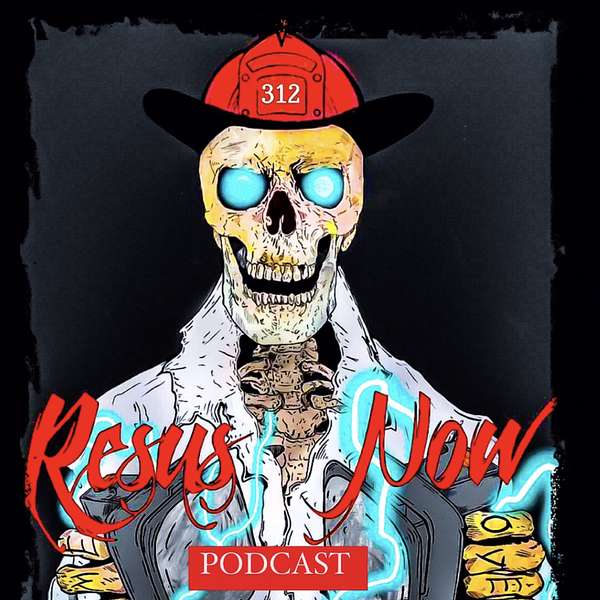
Resus Now
Resus Now
Episode 1 - Airway Management, part 1
The long awaited first episode of Resus Now! This episode is the first in our multipart series on Airway Management.
Questions? Email us at ResusNowQuestions@gmail.com
Resus Now- episode 1-
Airway management-part 1 show notes
1. Talk about preparing to intubate a patient, gathering equipment, assigning roles, back up plans for failure
2. Basic equipment needed in EVERY intubation- preOX equipment= BVM w/ PEEP valve, NC at 15 LPM, suction that works, Monitor, BP cuff, pulse ox, capnography, IV access confirmed to be patent, meds for RSI, premedication stuff for special circumstances, push dose pressors, direct laryngoscope w/ appropriate blades with lights that work, +/- NG tube (vomitus?), Video laryngoscope, at least 2 tubes w/ balloons tested, colometric device? Nahhh! Let’s use capnography! SGA, crash cart, respiratory therapist brings a vent and ABG kit, Bougie, Cric kit (Scalpel/finger/bougie technique), Post intubation sedation ready
3. Medication assisted approach for Paramedics——->Etomidate? Midazolam? Ketamine? Open airway, suction, preOx and use capnography
4. Failed airway algorithm- just discuss what we do in a normal situation. What’s our initial approach? Back up? Back up for the back up?
5. How to avoid the peri-intubation cardiac arrest. HOp Killers=hypotension + hypoxemia + pH—————-> Hypoxemia =adequate preoxygenation and 1st pass success and don’t forget about pulse ox lag and overall inaccuracy of the value on the screen once sats drop below 80%. Hypotension = push dose pressors labeled and at the bedside. Low pH from metabolic source= awake intubation with ketamine? Bicarbonate?
6. Initial ventilator settings= Vt of 8ml/kg of PBW, RR- depends, fiO2 of 60 and titrate, flow 40-60, PEEP of 5
7. Direct laryngoscopy techniques: Rule of 90’s = maintain sats above 90, maintain systolic BP above 90, and intubate in under 90 seconds. Use EVLI and ELM w/ head lift for a systematic approach to laryngoscopy